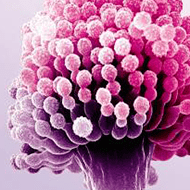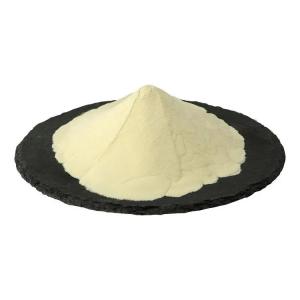Phosphatidyl serine is mixed with pea protein.
Time:2025-08-13Phosphatidylserine (PS) is a phospholipid naturally found in cell membranes, known for its structural role and compatibility with various food and supplement products. Pea protein, on the other hand, is a plant-based protein source derived from yellow peas (Pisum sativum), valued for its balanced amino acid profile and allergen-friendly characteristics. When combined, phosphatidylserine and pea protein create a functional ingredient blend that integrates lipid-based and protein-based nutritional components for use in food, beverage, and supplement formulations.
Composition and Characteristics
Phosphatidylserine is amphiphilic, containing both hydrophilic (water-attracting) and hydrophobic (fat-attracting) regions, while pea protein is primarily composed of globulins and albumins that readily disperse in water when properly processed. The blend benefits from the protein’s natural emulsifying properties, which can help disperse the phospholipid in aqueous systems. This synergy can improve the physical stability of powders, shakes, and emulsified beverages.
Production Process
The mixture can be produced through dry blending or wet processing.
Dry blending involves mixing spray-dried PS powder with pea protein isolate or concentrate in controlled conditions to ensure even distribution.
Wet processing can involve creating an emulsion of PS in water with pea protein as a stabilizer, followed by spray-drying to create a uniform powder.
Additional processing aids such as natural antioxidants, flow agents, or encapsulating materials may be included to enhance stability and shelf life.
Functional Advantages in Formulation
From a manufacturing perspective, combining PS with pea protein offers:
Improved dispersibility in aqueous beverages due to protein-stabilized emulsions.
Reduced clumping in dry mixes, making the powder more free-flowing.
Potential flavor masking for the lipid component, as pea protein can reduce the perception of certain off-notes.
Applications
The phosphatidylserine–pea protein combination can be incorporated into:
Nutritional shakes and smoothies as a ready-to-mix powder.
Meal replacement products to provide both lipid-based and protein-based nutrients.
Sports nutrition beverages where protein supports recovery-focused formulations and PS offers differentiation in product positioning.
Plant-based functional foods where both ingredients align with vegan or vegetarian product claims.
Storage and Packaging Considerations
To preserve quality, the blend should be stored in airtight, moisture-proof containers away from light and heat. If the product is spray-dried, oxygen-barrier packaging and optional nitrogen flushing can extend shelf life.
Conclusion
The combination of phosphatidylserine and pea protein unites the benefits of a functional phospholipid with the versatility of a plant-derived protein source. Through thoughtful formulation, this pairing can enhance product stability, sensory appeal, and market positioning in both plant-based and functional nutrition categories.


 CN
CN





